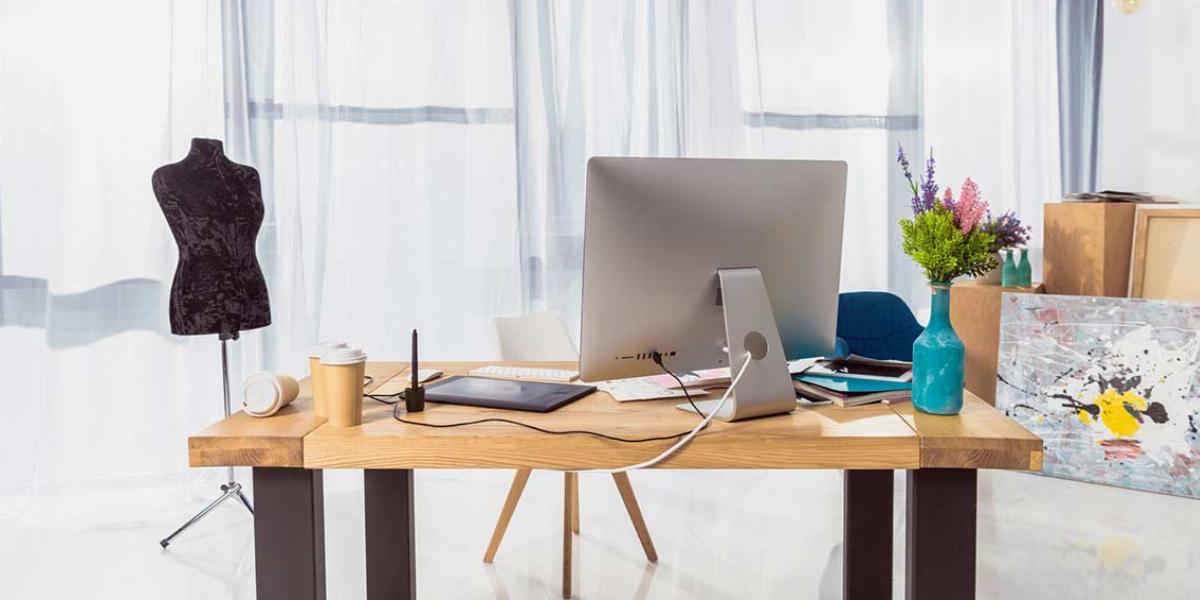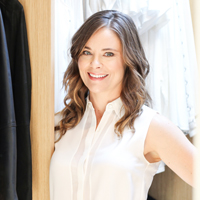
It’s no secret that being organized is key to productivity. But if you’re reading this, you probably have a mountain of papers on your desk, office supplies strewn around and aren’t sure how to create a better system. Not to worry. We’ve done the heavy lifting for you and found the best office organization tips to help you get important papers in order and keep your workspace tidy.
First, you’ll need to get rid of the mess. Chances are, your home office is filled with odds and ends from around the house, so pull out anything that doesn’t belong there. Your kids’ toys, dishes and the book from your night stand all need to go. Store these where they’re used or find them a permanent home so they don’t end up back in your office.
The next step in organizing your home office is to tackle the heap of bills and mail on your desk.

“Paper organization is the toughest. You can feel like you’re going nowhere fast because it’s tedious and challenging. But if you streamline your paperwork, it will help you to feel in control and allow you to become more astute about things like your financial information.”
Denise Allan | Certified Professional Organizer, Simplify Experts
To figure out what to keep, separate your pile of papers into four categories as you go through them:
Once you know which papers to keep, sort them into categories that make the most sense to you: financial, medical, personal, etc. Then, file them away. Denise Allan, from Simplify Experts, recommends filing over other methods, like organizing papers into binders, because it takes up less space.

“Files are better than piles. You don’t want to churn through paper. Paper files should be no more than one-inch thick.”
Denise Allan | Certified Professional Organizer, Simplify Experts
A great way to stay on top of paper clutter is to get rid of it. Most banks and utility companies offer electronic billing and some offer a discount if you take this route. Cut down on paper even further and pay your bills online, too. You can also keep track of your statements through your online account, so you don’t have to worry about filing and deciding how long to keep them.

“I personally prefer a digital filing system and have eliminated almost all paper in my life with the exception of important government documents, such as my social security card, tax returns, etc.”
Lili Pettit | Founder, Clutter Healing, Inc.
In a traditional office, there’s usually a closet to store extra pens, notepads and other supplies. You may not have a whole closet worth of space to work with, but there are plenty of clever tricks to organize office supplies at home.

“Not sure how to get started? Pull out whatever you can and group like with like.”
Kathy Vines | Certified Professional Organizer, Clever Girl Organizing
Here’s a quick checklist when considering how to organize office supplies:
|
□Sort everything on your desk into like piles. □Put the things you use most often, like pens, sticky notes and your calendar, within arm’s reach □Less important, less used items can be put out of reach or in a storage closet. |

Also consider the amount you have of each item. Do you need 100 pens or could you use that space to store something else if you only kept 10? Can you keep a few on your desk and the rest somewhere else?
The easiest way to keep things tidy is to put them into labeled containers. Look to stores like Target or The Container Store for plastic drawers, boxes or other organizers. Lili Pettit, founder of Clutter Healing, Inc., recommends using clear bins. They allow you to see what you have on hand and avoid wasting time and money on supplies you already have enough of.
Pro tip: Be creative. You can get crafty and make drawer dividers out of cereal boxes, or use something that better fits the aesthetic of your office, like mason jars. You can even repurpose old shoe or smartphone boxes to organize office supplies.
When you’re organizing your office, you may find miscellaneous chargers, cords and software. Vines recommends sorting them into three piles and asking yourself a question for each:
| Take a look at the item | Ask yourself… | Example |
|---|---|---|
| Pile 1: I know what this is. | Do I need this? | If it’s a charger to an iPad you no longer own, you don’t need it. |
| Pile 2: I think I know what this is. | Can I find what it is for? | If you no longer own whatever the cable or software was for, you don’t need it. |
| Pile 3: I don’t have a clue what this is. | Is it a disk? Does your computer even have a disk driver? | If you don’t have a disk drive, the disk is probably for an old computer. You don’t need it. |
Cord chaos is ugly to look at, so do yourself a favor and go wireless where you can. Try using a wireless mouse, keyboard and printer. It’s also a good idea to find a place to hide or neatly store the cables, whether that means keeping them in a drawer or finding a place to hang them.
Pull cables through the fold back loops of a binder clip by temporarily disconnecting them from the body of the clip. (To do this, pinch the sides of the fold back loops together.) Once they’re reattached, all you have to do is clamp the clip onto the edge of your desk.
If you need to get rid of old cables or electronic devices, consider recycling them. Check out our Electronics Disposal Guide to find out what can be recycled and how to dispose of E-waste properly.
To figure out the best way to make the most of a small space, think vertical, and don’t be afraid to use the wall.
Things to consider:
Allan says to think wisely about the space you’re using for your home office. Are you using a spare bedroom? Take out the clothes rail in the closet and add shelves to store supplies. If your desk lacks drawers or you’re using a table, get small plastic drawers that can fit on your desktop to hold important items.
Now that you’ve gone through the trouble of organizing your home office, you need to keep it clean. This is where all those labels will come in handy. They’ll reinforce where supplies and files should go, so putting them away becomes second nature. Give yourself a few weeks to get used to the office organization system you’ve created.

“I encourage my clients to try the new system for a month. Things will start to feel more natural. If they can’t stick with it, then I tell them to adjust.”
Amy Trager | Certified Professional Organizer, www.amytrager.com
The hardest part of organizing is getting yourself to do it, so Vines says to start small. Tackle one drawer or shelf at a time. Set a timer for 20 minutes and see what you can get done. With these small goals and advice from the experts, you’ll get there.
Now that you've organized your papers and supplies and can get work done in your home office, tackle clutter in the rest of the house! Check out our decluttering rules for organizing the kitchen, bathroom, garage, closet, basement, attic and mudroom.
